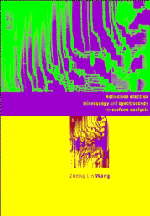Book contents
- Frontmatter
- Contents
- Preface
- Symbols and definitions
- 0 Introduction
- 1 Kinematical electron diffraction
- Part A Diffraction of reflected electrons
- Part B Imaging of reflected electrons
- Part C Inelastic scattering and spectrometry of reflected electrons
- 9 Phonon scattering in RHEED
- 10 Valence excitation in RHEED
- 11 Atomic inner shell excitations in RHEED
- 12 Novel techniques associated with reflection electron imaging
- Appendix A Physical constants, electron wavelengths and wave numbers
- Appendix B The crystal inner potential and electron scattering factor
- Appendix C.1 Crystallographic structure systems
- Appendix C.2 A FORTRAN program for calculating crystallographic data
- Appendix D Electron diffraction patterns of several types of crystal structures
- Appendix E.1 A FORTRAN program for single-loss spectra of a thin crystal slab in TEM
- Appendix E.2 A FORTRAN program for single-loss REELS spectra in RHEED
- Appendix E.3 A FORTRAN program for single-loss spectra of parallel-to-surface incident beams
- Appendix E.4 A FORTRAN program for single-loss spectra of interface excitation in TEM
- Appendix F A bibliography of REM, SREM and REELS
- References
- Materials index
- Subject index
10 - Valence excitation in RHEED
Published online by Cambridge University Press: 18 January 2010
- Frontmatter
- Contents
- Preface
- Symbols and definitions
- 0 Introduction
- 1 Kinematical electron diffraction
- Part A Diffraction of reflected electrons
- Part B Imaging of reflected electrons
- Part C Inelastic scattering and spectrometry of reflected electrons
- 9 Phonon scattering in RHEED
- 10 Valence excitation in RHEED
- 11 Atomic inner shell excitations in RHEED
- 12 Novel techniques associated with reflection electron imaging
- Appendix A Physical constants, electron wavelengths and wave numbers
- Appendix B The crystal inner potential and electron scattering factor
- Appendix C.1 Crystallographic structure systems
- Appendix C.2 A FORTRAN program for calculating crystallographic data
- Appendix D Electron diffraction patterns of several types of crystal structures
- Appendix E.1 A FORTRAN program for single-loss spectra of a thin crystal slab in TEM
- Appendix E.2 A FORTRAN program for single-loss REELS spectra in RHEED
- Appendix E.3 A FORTRAN program for single-loss spectra of parallel-to-surface incident beams
- Appendix E.4 A FORTRAN program for single-loss spectra of interface excitation in TEM
- Appendix F A bibliography of REM, SREM and REELS
- References
- Materials index
- Subject index
Summary
Electron energy-loss spectroscopy (EELS) has proven to be a powerful method for studying the electronic structure and performing microanalyses of materials in a transmission electron microscope (see for example, Egerton (1986)). In conjunction with imaging of thin films by TEM and STEM, EELS has permitted chemical analysis of small specimen regions with high spatial resolution. The analysis of energy-loss edges for inner-shell excitation has allowed the determination of valence states of atoms from the energy-loss near-edge structure (ELNES) and determination of the local environments of atoms from the extended energy-loss fine structure (EXELFS). The use of EELS in the glancing incidence, surface-reflection mode for bulk samples is an attractive topic since the penetration of the electron beam into the surface, in general, is just a few atomic layers. This is the technique of high-energy reflection electron energy-loss spectroscopy (REELS). The analysis of the composition and structure of thin surface layers can form an important adjunct to high-resolution surface imaging by REM, or in combination with scanning REM (SREM), microdiffraction and secondary electron (SE) imaging, which are possible with STEM instruments.
In this chapter and Chapter 11 we describe high-energy REELS experiments performed in a TEM or STEM with high spatial resolution. The basic theory of valence excitation will be given and its applications to RHEED are described.
EELS spectra of bulk crystal surfaces
When an electron passes through a thin metal foil, the most noticeable energy loss is due to the plasmon oscillations in the sea of conduction electrons.
- Type
- Chapter
- Information
- Publisher: Cambridge University PressPrint publication year: 1996

